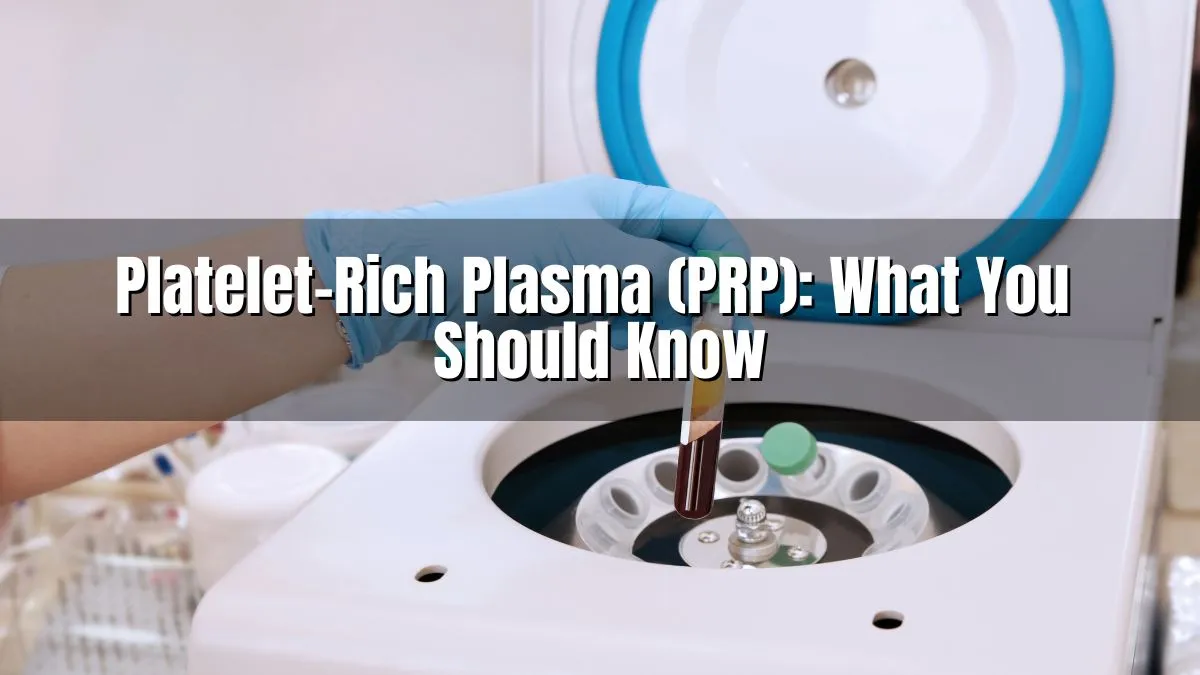Platelet-Rich Plasma (PRP): What You Should Know

Understanding Platelet-Rich Plasma
Platelet-rich plasma, or PRP, has become increasingly recognised in both medical and aesthetic settings for its regenerative potential. At DA Aesthetics in Buckinghamshire, I take a clinically sound, nurse-led approach to PRP treatment—ensuring every procedure is safe, evidence-based, and aligned with your individual needs.
Table of Contents
ToggleWhat Is Platelet-Rich Plasma?
PRP is a concentration of your own blood’s platelets—tiny components best known for helping to clot wounds but also rich in growth factors that stimulate cell repair and regeneration. The treatment involves drawing a small amount of blood, spinning it in a centrifuge to separate the platelets, and re-injecting the concentrated plasma into targeted areas of concern.
This is often referred to as the “vampire facial” in cosmetic circles, though the actual name undersells the clinical mechanism at work.
What Is PRP Used For?
At DA Aesthetics, PRP is offered for:
-
-
- Skin rejuvenation: Stimulating collagen production and improving skin texture
- Under-eye concerns: Supporting tissue healing in delicate areas
- Hair loss: Particularly in early-stage male or female pattern hair thinning
- Post-treatment recovery: To complement procedures like microneedling or laser
- Joint and soft tissue pain: In medical settings, PRP is also used to aid musculoskeletal recovery
- Skin rejuvenation: Stimulating collagen production and improving skin texture
-
How Does PRP Work?
Platelets are rich in proteins and growth factors that promote healing. When injected into the skin or scalp, these growth factors can:
-
-
- Support the skin’s natural repair process
- Increase blood supply to hair follicles
- Stimulate fibroblasts and collagen production
- Improve skin tone and elasticity
- Support the skin’s natural repair process
-
Because the treatment uses your own blood, the risk of allergic reaction is minimal. However, the procedure must still be carried out under clinical conditions by a qualified practitioner.
What Happens During Treatment?
At DA Aesthetics, here’s what you can expect:
-
Consultation: A full clinical assessment and medical history review
-
Preparation: A small amount of blood is drawn
-
Centrifugation: The blood is spun to extract and concentrate the platelets
-
Application: The PRP is injected or applied via micro-needling
-
Aftercare: Clear guidance on how to support healing post-treatment
Treatment time typically ranges from 45–60 minutes. Results are gradual, often visible after several weeks, with optimal effects following a course of treatments.
Is PRP Safe?
Yes—when performed by a qualified healthcare professional using sterile technique. At DA Aesthetics, PRP is only administered after a face-to-face consultation, in line with NMC (Nursing and Midwifery Council) prescribing regulations. DA Aesthetics do not offer online consultations for injectable treatments.
As with any injectable, minor swelling or bruising may occur, but serious side effects are rare. Because the product is autologous (derived from your own body), risks of rejection or allergy are significantly reduced.
PRP vs Other Treatments
While PRP is a natural, regenerative approach, it may not offer the same immediate effects as treatments like dermal fillers or anti-wrinkle injections. However, its appeal lies in its ability to stimulate your body’s own healing response, making it a valuable tool in longer-term skin and hair restoration plans.
Is PRP Right for You?
PRP is generally suitable for people looking for a natural enhancement in skin quality or early support for thinning hair. It is not a quick fix and may not be suitable for those with platelet disorders, certain autoimmune conditions, or active skin infections.
At DA Aesthetics, a detailed consultation is required before starting treatment. We will discuss your concerns, medical history, and expected outcomes to ensure PRP is the right choice for you.
Why Choose DA Aesthetics?
With over 14 years of clinical experience and advanced training in aesthetic medicine, I ensure every PRP treatment is guided by medical knowledge and ethical practice. As a Registered Nurse and Independent Nurse Prescriber, I am committed to safe, personalised care that prioritises your well-being above all else.
You’ll receive:
-
-
- A face-to-face consultation in compliance with UK regulations
- Use of medical-grade equipment in a clinical setting
- Evidence-based care tailored to your skin and health profile
- Supportive aftercare to maximise your results
- A face-to-face consultation in compliance with UK regulations
-
Frequently Asked Questions (FAQs)
Most clients benefit from 3 sessions spaced about 4–6 weeks apart, followed by maintenance sessions every few months.
Mild discomfort may occur, but I can apply topical anaesthetic beforehand if needed.
Skin improvements typically appear after 2–4 weeks. For hair, expect visible changes around 3–6 months.
Yes, PRP is generally safe for all skin tones and types when performed by a qualified practitioner.
Yes. PRP is often used alongside microneedling, laser therapy, or skin boosters to enhance results.